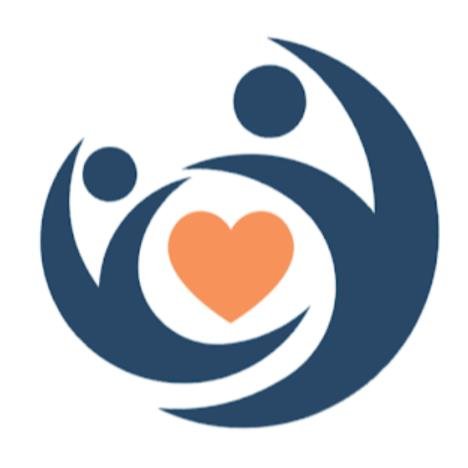Artificial intelligence is no longer a futuristic concept; it’s a present-day reality that’s steadily integrating into Canadian clinical workflows. For the nurses, physicians, therapists, social workers, and discharge planners dedicated to geriatric care in Ontario, the rapid emergence of AI can feel like learning a new language.
This primer is designed to bridge that gap. We’re cutting through the jargon to provide a practical guide to the essential AI terms you need to know, grounded in real-world Canadian examples. Understanding this vocabulary is the first step toward not just adapting to change, but actively shaping how these powerful new tools are used. This is your guide to understanding how AI will augment your expertise, streamline your work, and ultimately enhance the care you provide to older adults.
1. Machine Learning (ML): The Predictive Engine
At the heart of modern AI is Machine Learning. It is a method of “teaching” a computer to recognize complex patterns and make predictions by feeding it vast amounts of data. Instead of being programmed with rigid rules for every scenario, the system learns from experience. In a healthcare context, an ML model ingests thousands of data points from sources like electronic health records (EHRs), lab results, and wearable sensors to forecast what might happen next.
A landmark Canadian example is the collaboration between Toronto’s University Health Network (UHN) and the Vector Institute for Artificial Intelligence. They developed an ML-powered tool trained on two decades of anonymized Ontario health data to predict the 30-day readmission risk for seniors with complex chronic diseases. A 24-month pilot study across several UHN and Sinai Health departments, published in the Canadian Medical Association Journal earlier this year, found that clinical teams using the model’s risk scores to guide discharge planning achieved a 22% relative reduction in readmissions for the target cohort.
Impact on Your Profession:
For nurses and physicians, ML-driven alerts will become a standard feature in EHRs. You might see a “Sepsis Risk: High” or “Fall Risk: 85%” flag on your patient dashboard. This allows for proactive rounding and preventative care plans that can help reduce the 1 in 7 readmission rate for Canadian seniors.
For therapists, ML models can analyze data from smart insoles or wearable sensors to provide a detailed picture of a patient’s mobility and activity levels at home. This allows you to tailor rehabilitation programs with greater precision.
2. Natural Language Processing (NLP): The Language Interpreter
Natural Language Processing is the branch of AI that gives computers the ability to understand, interpret, and generate human language. NLP is what allows a machine to read a clinical note, understand a spoken description of symptoms, or summarize a lengthy report. More advanced NLP can perform “sentiment analysis” to gauge a patient’s mood or extract key clinical concepts—like medications and symptoms—from unstructured, narrative text.
Consider the “Connected Care” initiative by a large Ontario Health Team (OHT) in Southwestern Ontario. They’ve deployed an NLP-powered ambient scribe in their geriatric outpatient clinics. The system, developed by a Waterloo-based tech firm, securely listens to and transcribes patient encounters. Data from the initial 18-month rollout shows that clinicians reduced their documentation time by an average of 14 minutes per consultation, with 90% reporting a significant decrease in administrative burnout and an increase in face-to-face patient engagement.
Impact on Your Profession:
For all professionals, the most immediate impact will come from ambient scribes. These tools listen to patient encounters and automatically draft the clinical note, which you then review and sign, saving hours of administrative work.
For social workers and discharge planners, NLP can analyze intake forms to automatically highlight key social determinants of health. It can flag mentions of “loneliness” or “caregiver stress,” ensuring these critical factors are addressed.
3. Computer Vision: The Digital Eye
This field of AI trains computers to “see” and interpret the visual world. Just as an ML model learns from numerical data, a computer vision model learns from millions of labelled images, enabling it to recognize objects and detect anomalies.
A compelling Canadian example comes from a pilot project involving Health Sciences North in Sudbury and several remote Northern Ontario communities. To overcome the challenge of delayed radiologist access, they integrated a computer vision tool that pre-screens for common geriatric injuries like hip and wrist fractures. The AI provides a preliminary analysis to the on-site nurse practitioner in under two minutes. Over the past year, this has reduced the median time-to-preliminary-finding from 10 hours to less than 30 minutes, allowing for faster pain management and preparation for transport via Ornge.
Impact on Your Profession:
For physicians and nurse practitioners, computer vision will act as a “second read” on diagnostic images, helping to catch a small but significant percentage of findings that might be missed on an initial review.
For nurses and therapists in LTC or home care, ambient sensor systems will use computer vision for passive monitoring. These systems can track a resident’s mobility or send an immediate alert if a fall occurs—all without requiring the resident to wear a device.
4. Generative AI: The Content Co-Creator
This is one of the newest and most talked-about forms of AI. While other AIs analyze existing data, Generative AI creates entirely new content, such as text, summaries, or images. It uses powerful Large Language Models (LLMs) to generate human-like text in response to a prompt.
Toronto’s Baycrest Centre for Geriatric Care, a global leader in aging and brain health, is experimenting with a secure, in-house generative AI model to improve health literacy. When a patient is discharged, a social worker or discharge planner uses the tool to transform complex clinical notes into a simple, personalized “My Health Summary” document, available in multiple languages. Patient comprehension surveys show that individuals receiving the AI-generated summary were 40% more likely to correctly describe their medication changes compared to those receiving standard printouts.
Impact on Your Profession:
For discharge planners and social workers, Generative AI can dramatically reduce the time spent writing referral letters, filling out forms for community services, and creating patient-facing educational materials.
For all professionals, it can be used to quickly get up to speed on a new patient by generating a concise summary of their entire medical history from the EHR, allowing for more efficient and informed consultations.
Conclusion: The Professional’s Role in the AI Era
The arrival of AI in geriatric care is not a prelude to replacement; it is a call for augmentation. These tools are designed to handle the data analysis and administrative tasks that machines do well, freeing up human professionals to focus on the things they do best: applying critical thinking, navigating complex family dynamics, providing empathetic support, and making nuanced ethical judgments.
Understanding this new language is the key to becoming an active and informed participant in the biggest technological shift of our generation. It empowers you to ask the right questions, advocate for tools that truly solve clinical problems, and ensure that AI is implemented as a trusted partner in your mission to provide the best possible care for older adults.
Frequently Asked Questions (FAQs)
1. Will AI replace the jobs of healthcare professionals?
No. The consensus among experts is that AI will augment, not replace, healthcare professionals. It will automate certain tasks (like documentation and data analysis), but it cannot replicate the critical thinking, empathy, and hands-on skills of clinicians. Roles will evolve, but the need for human experts will remain central.
2. How can I start learning more about AI in a practical way?
Start by paying attention to new features being rolled out in your own hospital or clinic’s EHR. Attend webinars offered by your professional association, many of which are now focusing on digital health. Reading reputable health-tech publications can also provide accessible, real-world examples.
3. What are the biggest ethical concerns with AI in healthcare?
The main concerns include data privacy (ensuring patient information is secure), algorithmic bias (making sure AI tools don’t perpetuate health inequities that exist in the data they were trained on), and accountability (determining who is responsible when an AI tool makes an error).
4. Is patient data safe when used by AI systems?
Reputable AI systems used in healthcare must comply with stringent privacy laws like PHIPA in Ontario. Data is typically anonymized and encrypted and stored on secure, dedicated servers. It is the responsibility of healthcare organizations to ensure any AI vendor they work with meets these high standards.
5. Can AI really help with the staffing shortage?
AI can help by improving efficiency and reducing burnout. By automating time-consuming administrative tasks, AI can free up existing staff to spend more time on direct, high-value patient care. It can make existing staff more effective, though it is not a substitute for hiring more clinical professionals.
6. What is the difference between AI and Machine Learning?
Artificial Intelligence (AI) is the broad concept of creating intelligent machines that can simulate human thinking and behaviour. Machine Learning (ML) is a subset of AI; it is the specific process and technology that allows a machine to learn from data. In short, ML is the most common method for achieving AI today.




